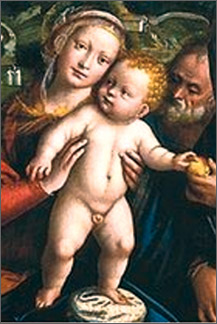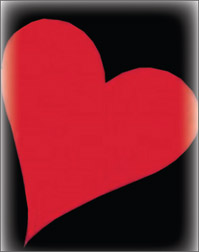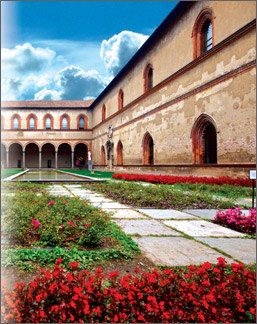The City of Mink Walking through Milan
By Dr Binoy KAMPMARK
What is the fatal charm of Italy? What do we
find there that can be found nowhere else? I believe it is a certain
permission to be human, which other places, other countries, lost long
ago.
Erica Jong
The city of mink, lying women who seem to have stepped out of
abundant wardrobes, worn not even in the name of extravagance so much as
expected formality. This is the first impression you get in Milan, as
you take to the streets of a city that prides itself as being Italy’s
exception.
 It is the exception, because here, one finds banking that presumably
works, a situation that does not prevent transactions with your
international bank card as being declared ‘void’. (Italian bancomats are
notoriously rude.) It is the exception, because here, one finds banking that presumably
works, a situation that does not prevent transactions with your
international bank card as being declared ‘void’. (Italian bancomats are
notoriously rude.)
It is the exception because here, the food is not up to scratch.
Italy can boast a culinary diversity that is positively Asiatic in
variety, but the same cannot be said of this affluent, aloof bit of the
country. In Milan, where the fashion model reigns supreme, the food
portions are small and unadventurous. The stingy hold fort, the ruthless
dieticians seem in control.
Much of the food that is available has fallen victim to the cultural
crimes of ‘international Italian cuisine’, though a clotty, creamy
carbonara was not detectable. While such acts would be punished in other
parts of Italy with suitable severity, Milan extols them in order to
lure the gullible tourist. Tourists are, after all, the perfect fruit,
to be squeezed and drained for all they are worth.
French models
Mink maketh the woman, and at a restaurant such as San Babila Café,
there are everywhere, be there frustrated French models awaiting a bill
that will never arrive, or established Russian models who, despite
fading, still manage enough of a serve to stay in the limelight. Indeed,
the proprietors have been rather witty, naming pizzas after brand names.
An edible, crust filled Dolce Gabbana might come as a surprise. But
Milan is heavy with such references. Through the gigantic double arcaded
Galleria Vittorio Emanuele II, saturating commerce and a series of
strategically located fashion shops are placed. The buyer of brand
labels is not merely to be seduced but lauded.
A trip to Italy can produce various distortions for the visitor, the
sort one has when the mind is addled by an excess of superb locally
crafted food, regional wines and a generous dose of Baroque intensity.
Then, there is the hand of the Catholic Church, whose spiritual and
tangible presence seems permanent.
In the Brera Gallery (Pinacoteca di Brera), the collection of works
that stem from Church panels featuring the presence of the Virgin Mary
with the Christ Child seem endlessly rich, if perhaps a touch
over-repetitive. The spectator is eventually left trying to identify the
smallest detail to note the originality between one Virgin and the
other, and this, for the untutored eye, can prove a challenge. But even
the most vulgar eye would be able to appreciate the stunning array of
works by Bernadino Luini in the first part of the exhibition.
 This does not detract from several stunning collection pieces. One of
the gallery’s very popular items is the tenderly rendered The Kiss
(1859) by Francesco Hayez, though it might seem a touch sentimental and
typical of the Romantic era. Then there is Tintoretto’s richly dark
realisation in Finding of the Body of St. Mark (1548), and the room that
thunders the arrival of perspective in Western painting – Piero della
Francesca’s Holy Conversation (1472-4), and Raphael’s The Marriage of
the Virgin (1504) and Donato Bramante’s grim but beautiful Cristo alla
colonna (1490). This does not detract from several stunning collection pieces. One of
the gallery’s very popular items is the tenderly rendered The Kiss
(1859) by Francesco Hayez, though it might seem a touch sentimental and
typical of the Romantic era. Then there is Tintoretto’s richly dark
realisation in Finding of the Body of St. Mark (1548), and the room that
thunders the arrival of perspective in Western painting – Piero della
Francesca’s Holy Conversation (1472-4), and Raphael’s The Marriage of
the Virgin (1504) and Donato Bramante’s grim but beautiful Cristo alla
colonna (1490).
As the visitor is going through this art cornucopia, one is reminded
that the exhibition of art is as much a political act as it is a
cultural one. To see church pieces, mosaics and paintings torn out from
their original religious or secular abode is like seeing the amputated
features of a body moved to different locations.
Vandalism
This species of vandalism is the tolerated one – if you have to steal
or desecrate, make sure there is a museum at the end of the line to
receive the piece, preferably with a fat pay check.
Saints should know about this more than most, as they became
collector’s items long before the birth of the museum – a finger here, a
limb appearing with miraculous coincidence there, leading to profitable
pilgrimages for the local authorities. The effect is much the same –
removing church items is the effectuation of a grave robbery.
 Napoleon’s rough handiwork in Milan provides another example of
vandalism in action – a vandal and a connoisseur of culture at the same
time, a sentient savage who knew the practice of culture as much as he
knew the barbarisms of destroying it. Napoleon’s rough handiwork in Milan provides another example of
vandalism in action – a vandal and a connoisseur of culture at the same
time, a sentient savage who knew the practice of culture as much as he
knew the barbarisms of destroying it.
After dealing with the Austrians, who had themselves inflicted a host
of cultural crimes against the city during their century long
occupation, Napoleon proceeded to destroy parts of such buildings as the
Castello Sforzesco, a fortress complex that remains astonishing even
though most of its 1447 features disappeared.
Then there is that delicate issue of Leonardo Da Vinci’s fragile Last
Supper in 1796, which suffered unwanted attention from Napoleon’s
soldiers when they bivouacked in the refectory.
The oil and tempera masterpiece, ill-suited to wall surfaces, nestles
in the monastery next to the sobering majesty of Santa Maria del Grazie,
a remarkable basilica that still retains its paleochristian character.
In true Milanese cheek (and pocket), the Last Supper tends to be only
possible to view by bookings made online – how Leonardo would have
chuckled at such technological madness and its commodification at the
hands of Dan Brown and company.
Reproduction
One is, instead, reduced to seeing a description and reproduction of
it outside, hovering about in the hope that the guards will be daft
enough not to notice loiterers. But that is to be expected.
Milan is not merely the city of survival, it is a city of cultural
survival. In addition to an assortment of diligent plunderers, long
occupations and destructive raids – the Allied bombing of the city in
1943 was yet another effort to punch a hole in the city’s history,
Milan, and for that matter much of Italy, adapt with an understanding
only age provides. All of this, in spite of the mink.
Binoy Kampmark was a Commonwealth Scholar at Selwyn College,
Cambridge. He lectures at RMIT University, Melbourne. Email:
[email protected] |

